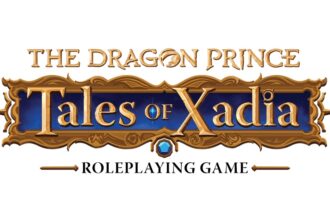WotC Sage Advice – Rules Roundup

There is a new article on the Wizards of the Coast D&D website by Jeremy Crawford that collects all of the past rule clarification documents and errata into a single spot: Sage Advice Rules RoundupBelow is the excerpt of the article for your convenience:
Sage Advice: Rules Roundup
By Jeremy Crawford – 06/22/2015
Like any heavily used system, the D&D rules undergo ongoing analysis, and occasionally, we like to pause and provide new resources for their current state.
Following the release of corrections for the fifth edition Player’s Handbook last week, this installment of Sage Advice presents several reference documents for the game, in the interest of giving D&D groups new tools for making the game work for them.
Next month, we’ll get back to our regular questions and answers, and we’ll begin compiling my most relevant rules answers from Twitter. If you have questions for a future installment of Sage Advice, please send them to sageadvice@wizards.com.
Sage Advice Compendium
Ever since Sage Advice started in January, we’ve received requests to gather it in one place. We’ve listened and created the following PDF to make it easier for you to find answers to your questions:
The PDF not only collects Sage Advice questions to date, but also lists the sources of the game’s official rules. Even better, we’ll expand that document every time we publish Sage Advice (the questions at the end of this column are also included). The PDF will effectively become the FAQ for the game.
Spell Lists
The Player’s Handbook gives you the spell lists of every spellcasting class, but sometimes you might want to find a spell using other criteria. This new PDF lets you find every ritual in one place, as well as look up spells by school of magic or by spell level:
The PDF also includes new versions of the class spell lists, which tell you each spell’s school of magic and whether a spell is a ritual.
This resource will be helpful for many of you, particularly those of you playing fighters who have the Eldritch Knight archetype, rogues who have the Arcane Trickster archetype, and warlocks who have the Pact of the Tome feature.
Player’s Handbook Errata
Here’s a link to the latest version of the Player’s Handbook errata document:
The eagle-eyed Sam Simpson, a member of our customer service team, noticed that the document released on June 10 missed a few details that appear in the third printing of the Player’s Handbook. As a result, we’ve updated the document to version 1.1 to be truly comprehensive. Here’s a list of the parts that have changed since version 1.0:
- Ranger’s Companion (The document now clarifies that the beast can spend Hit Dice during a short rest.)
- Wild Magic Surge (A surge can happen once per turn.)
- Pact of the Tome (The chosen cantrips needn’t be from the same spell list.)
- Suffocating (The words “or are choking” now appear in the first sentence.)
Errata-Related Questions
Why does the Player’s Handbook errata change X and not Y?
The errata for the first printing of the Player’s Handbook sparked a number of questions. Why did we make the changes we made? Why didn’t we make other changes? Did we change certain things, such as Empowered Evocation, because they were overpowered?
The answer to such questions is straightforward: we fixed mistakes in the text. The errata fixes text that was incomplete or off the mark in the original printing of the book. In the new edition, the errata process is strictly for the correction of such things. Rebalancing and redesigning game elements is the domain of playtesting, Unearthed Arcana articles, new design, and possible revision later in the edition’s lifespan.
We play the game often, and we regularly review Twitter posts, Reddit discussions, website forums, survey results, emails, and customer service reports about the game. You have concerns about the contagion spell? We know about them. You feel the Beastmaster is underpowered? We’ve had our eye on that subclass for a while. In fact, we have a long list of things in the game that we keep an eye on and that we expect to experiment with in the months and years ahead.
But that experimentation is unrelated to errata. Corrections—that’s what errata is about. If you read the errata document and think, “We were already playing Empowered Evocation the way it appears in the errata,” then the errata process is working as intended. It’s not intended to be filled with new design surprises. It’s meant to repair spots where we forgot to tell you something, where we inadvertently told you the wrong thing, or where some of you grasped our design intent and others didn’t, as a result of the text not being clear enough.
Some monsters have resistance or immunity to damage from nonmagical weapons. How is that affected by the change to unarmed strikes in the PH errata?
The change to unarmed strikes is related to a correction coming in the Monster Manual. As corrected, unarmed strikes aren’t weapons, but a character can use them to make melee weapon attacks. Such strikes aren’t meant to bypass a creature’s resistance or immunity to bludgeoning damage from nonmagical weapons.
Here’s a simple fix to use until the Monster Manual errata is released: whenever a stat block refers to resistance or immunity to bludgeoning damage from nonmagical weapons, read that last part as “nonmagical weapon attacks.”
Jeremy Crawford is the co-lead designer of fifth edition Dungeons & Dragons and the game’s managing editor



